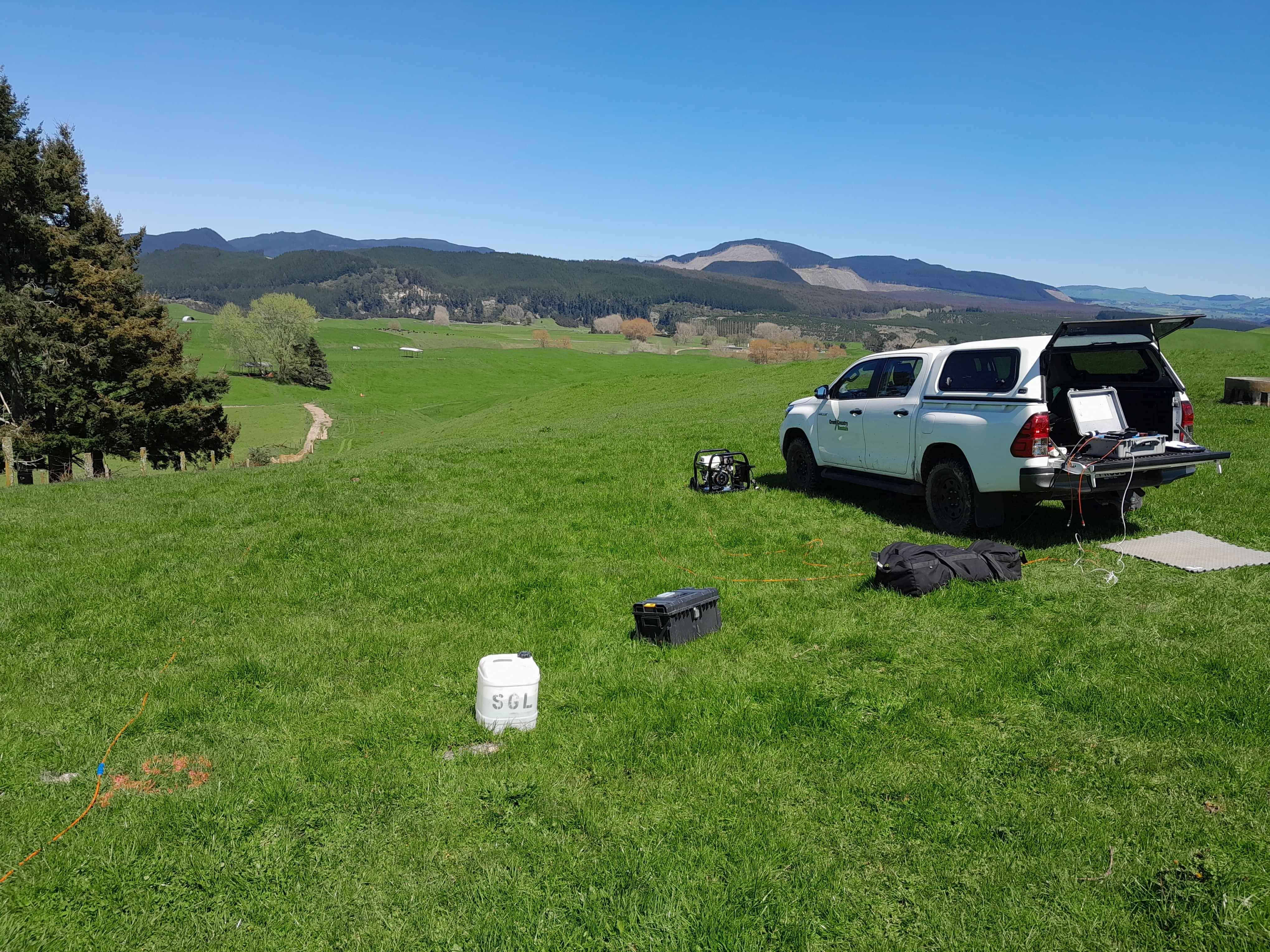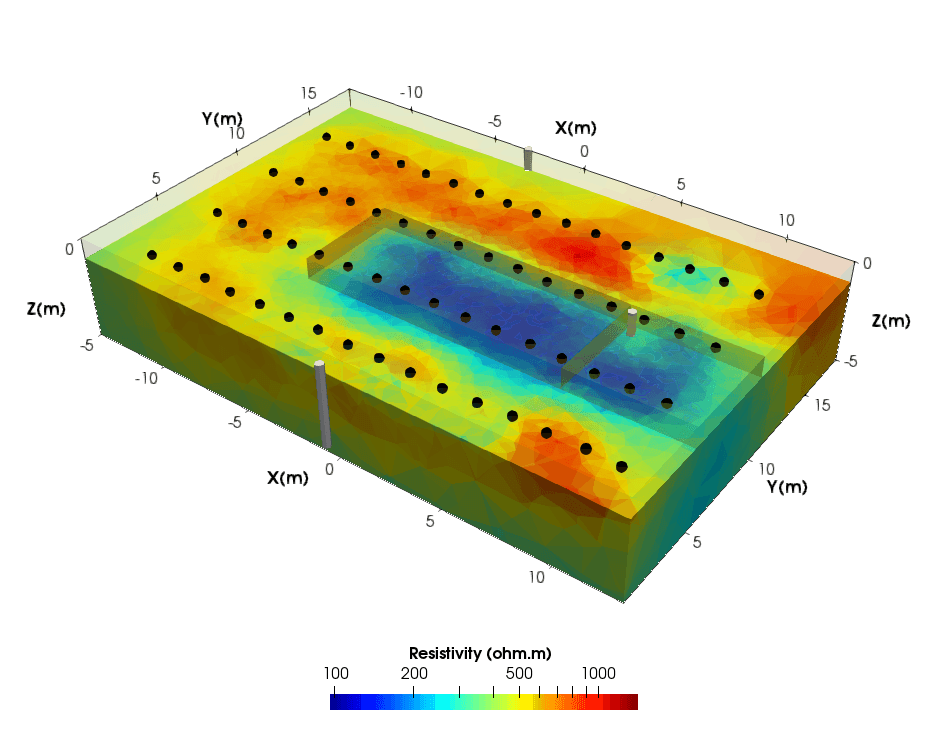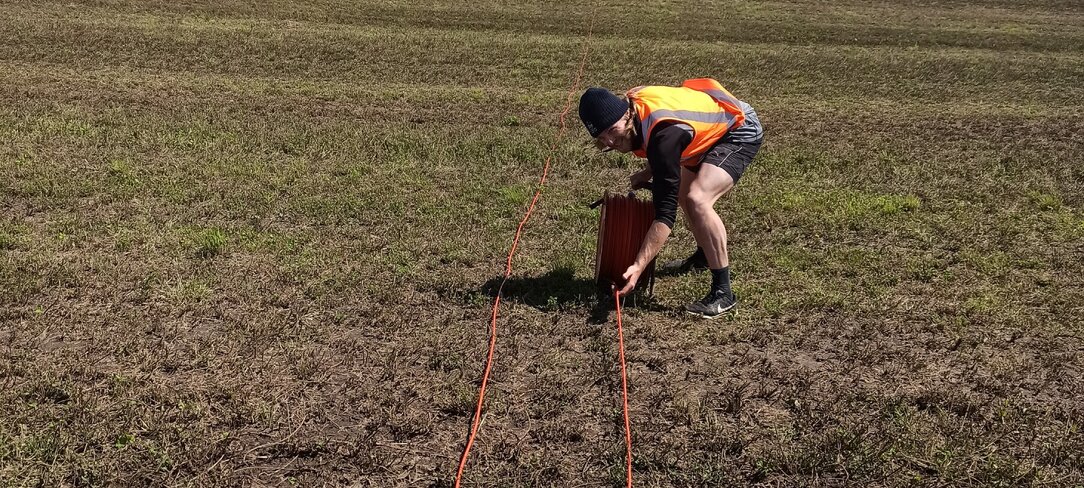Electrical Resistivity and IP Surveys
Southern Geophysical has led Electrical Resistivity Tomography (ERT), Induced Polarisation (IP), and Ground Conductivity (EM31) surveys for over two decades

Electrical Resistivity Tomography (ERT)
Electrical Resistivity Surveying (ERT) is a geophysical technique used to identify features in the subsurface by applying a current directly to the ground and measuring the voltage at receiver electrodes. A variety of configurations can be used, tailored to best identify the features of interest. Common applications include mapping infilled or voided sinkholes, identifying depth to bedrock, or locating potential groundwater resources. Other applications include mapping the size and extents of landfill or locating and delineating leachate plumes.

The above image shows the results of a 3D ERT survey assessing the conductivity of a nitrate reducing permeable barrier, prior to salt water tracer experiments. This survey was the beginning of a complete suite of time-lapse 3D ERT surveys undertaken by Southern Geophysical working alongside Dr Andrew Binley, and was initiated by the Institute of Environmental Science and Research (ESR) in their nitrate remediation programme. This work is featured on our Project page ESR-Nitrate Mitigation.
Induced Polarisation (IP)
Induced Polarisation (IP) is a survey method which measures the chargeability of materials in the subsurface, such as massive sulphide deposits. These hold a “charge” for a short duration of time, before dissipating, similar to that of a capacitor. A current is directly applied to the ground and the voltage response through time is captured at receiver electrodes.
The most common application for IP surveying is identifying minerals of interest through their IP response, or through locating accessory minerals with a strong IP response, such as locating potential gold sources by detecting accessory sulphides. Other applications include mapping the thickness and extents of landfill deposits or detecting water leaks through dams or embankments.
ERT and IP often go hand in hand as they use similar methods to produce different but complimentary datasets.
Ground Conductivity (EM31)
Alongside metal detection, an EM31 also measures the conductivity of the ground by inducing a current and measuring the response. Ground conductivity measurements are excellent for quickly and cost effectively mapping infilled sinkholes (karsts) and locating buried creek beds below proposed developments.




